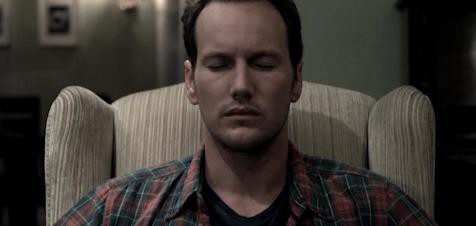'Insidious' and the Sacred Rules of Ghost Movies
‘Insidious’ and the Sacred Rules of Ghost Movies

What happens when James Wan, the Sultan of Saw (which, let us never forget, is the most important film series ever made) makes an old-school ghost movie?
Well, for one, he steals. From Argento, Polanski, Spielberg, Amenábar, even Shyamalan (who, let us not forget, did make one great ghost movie). And yes, James Wan even steals from himself. When faced with the prospect of a meat-and-potatoes horror film, the maestro of torture fetish has spackled together bits and shards from nearly everything in the genre, forming a pasty drywall that’s scary in some places, and just silly in others. And thus we have Insidious — in theaters today!
Do you really need me to tell you the premise of this movie? No, you don’t. It’s a formula that’s fueled countless ghost stories through countless decades (well, ok, around ten decades). Ridiculously attractive family enjoys the spoils of suburban life, with strapping dad (Patrick Wilson) heading off to work while fragile mom (Rose Byrne) writes girl-folk music and minds her brood. They wear matching PJs and drive SUVs and traipse through their well-appointed mahogany-paneled McMansion, until something goes… wrong. Something SPOOKY! Bumps in the night, doors creaking louder than a supersonic jet, windows mysteriously cracking at 100 decibels (seriously, this movie is LOUD), and all of it centered around a sweet, overly-shrewd child who winds up in a coma. Beautiful mother is besieged with fear and grief, while stoic husband bears it all. The marriage frays, the other children cower, the ghosts get nastier, and then… well, Jigsaw shows up? (No, that’s not a spoiler.)
The reason this premise is a cliché, of course, is because the cliché WORKS. There is nothing more terrifying than a big suburban house (seriously: I will only live in apartments). And there is no character more poignant and empathy-rousing than a terrorized child (or the terrorized mother trying to save him).
But to transform a cliché into a great horror movie, you need technique, and pacing — the slow, gradual reveal, the building of dread and unease that mounts until your chest hurts and your knuckles crack. Classic ghost-in-the-house films can have you reaching for an oxygen mask and crawling under your chair by the second half, even over something seemingly-mundane (remember the ball bouncing down the stairs in The Changeling? Yeah, me too, since I was shrieking like a tween watching Justin Bieber die by chainsaw).
The key to all this ghostly mastery, of course, is SUBTLETY. Shadows, dark corners, strange noises, all presented with patience and nuance and skill. So now you see the problem: Is there anything remotely subtle about Saw? Take away the bone-crushing machines and vats of hypodermic needles, and what are the Saw films really? Some cheap sets, a crazy albino, and a fetid shitpile of terrible acting. Which is essentially what we get with Insidious.
To be fair, despite all the clumsiness and mess, the first hour or so is pretty friggin’ scary. While Wan falls victim to every trap in the Ghost Gospel — excessive melodrama at every spooky sighting, screechy violins for every self-opening door, revealing the first ghost (a carbon copy of Vigo from Ghostbusters 2) way too soon — he does have a flair for using sound and mechanics in a horror film. Say what you will about Saw, but those death contraptions looked and sounded terrifying, and he puts those skills to use here.
But around two-thirds of the way through, it all devolves into mush. Specifically, we take a dive when Wan breaks Commandment Number ONE in ghost lore: Thou shalt not overexplain. Ghosts cannot be rationalized. There is no place for them in logic. Attempting to re-cast them within the sphere of lucid thinking will destroy your entire movie. (Remember the whole “demon expert” scene in Paranormal Activity? Remember how it was boring as shit?)
So when Byrne calls in “The People Who Can Help,” they proceed to steer the movie off a cliff. Wan can get away with stealing, and over-showing, and over-soundtracking, and even absurd character set-ups (I mean, Jesus: a four-bedroom house, an SUV and six months of medical bills on a lone teacher’s salary?). But when a set of hipster ghostbusters show up to help an old lady perform a séance in a gas mask, you officially know your movie has been composted into mineralized waste.
From there, it just gets laughable — which is a shame, since this one could have gone any number of ways. Even a Jigsaw cameo would have been preferable. At least he could have tossed in a catchy tagline.
Melissa Lafsky wants to be scared by your movie.
